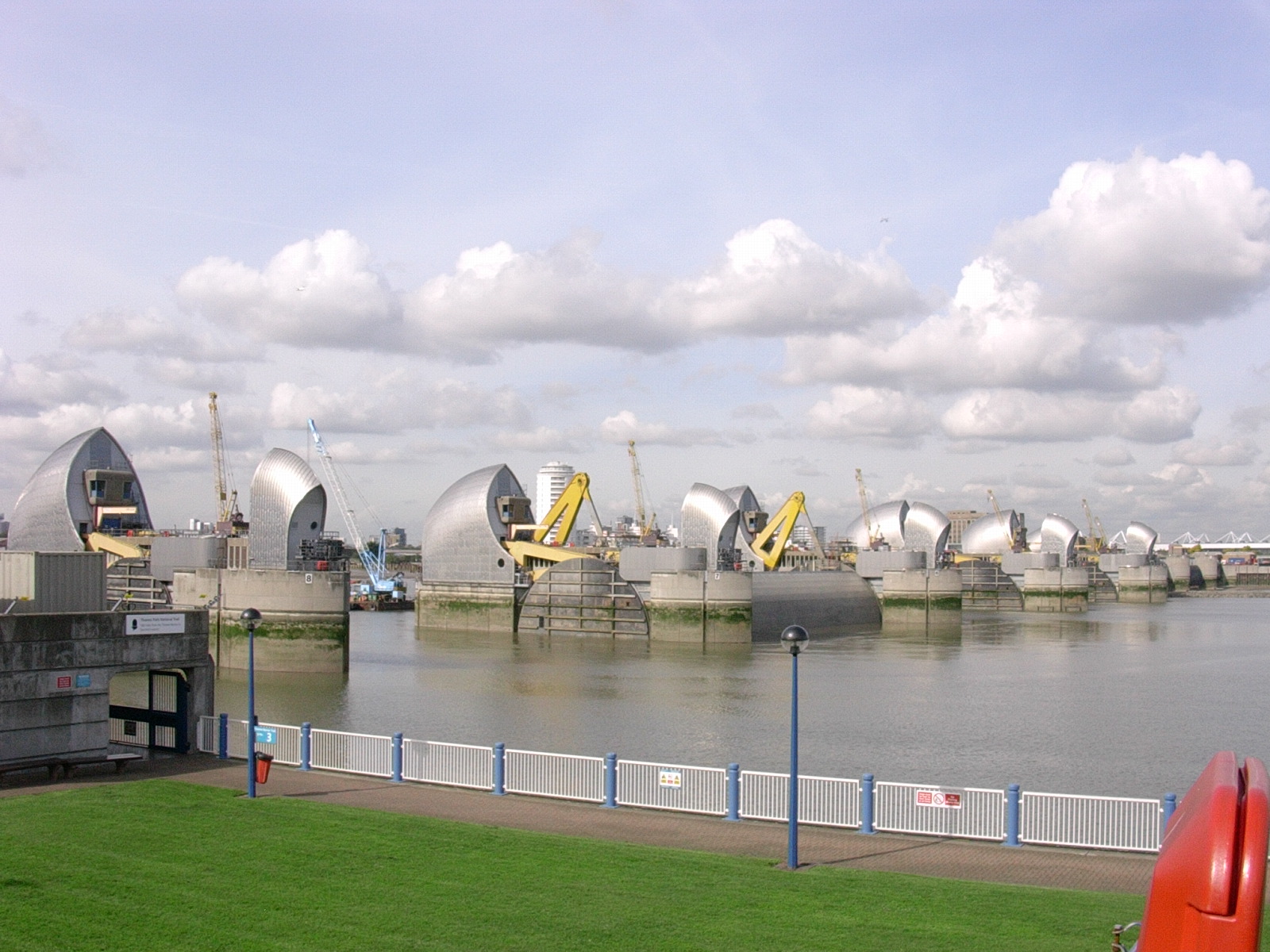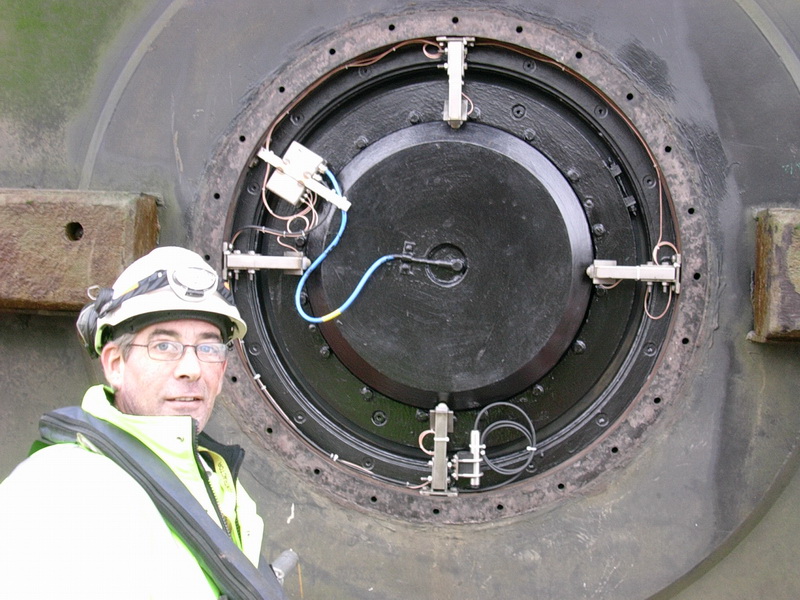 Operated by the Environment Agency, the Thames Barrier is London’s main defence against flooding. It became operational in 1982 and protects parts of the city against abnormally high tides and tidal/storm surges. Understandably, the barrier needs to be maintained to ensure it can protect the capital when needed. Indeed, during its history about a third of its 400 plus closures have been necessary, the rest being for maintenance purposes.
Operated by the Environment Agency, the Thames Barrier is London’s main defence against flooding. It became operational in 1982 and protects parts of the city against abnormally high tides and tidal/storm surges. Understandably, the barrier needs to be maintained to ensure it can protect the capital when needed. Indeed, during its history about a third of its 400 plus closures have been necessary, the rest being for maintenance purposes.
The barrier divides the Thames into four non-navigable spans (closest to the river’s banks) and six navigable spans; of which four are 61m wide and two are 30m wide. The non-navigable spans have falling radial gates, in that they lower into the water to form a barrier, whereas the navigable spans have rising sector gates which, in their open positions, lie flat with the river bed. Each of the four main gates weighs more than 3,300 tonnes and presents a 20m high barrier when in its defence position which can hold back loads of up to 9,000 tonnes.
To adopt their defence positions the main gates rotate through about 90o, and the maintenance position requires a further 90o of rotation. The bearings of the main gates have, since the early 1980s, therefore only ever experienced quarter and half turns; and any wear will reflect this life of partial rotations.
The Challenge
As the Thames Barrier approached its 30th anniversary, and under a contract awarded by the company responsible for its maintenance and upgrade projects, Monitran was tasked with designing, installing and commissioning a system to measure bearing movement and gate position. In addition, the system had to be a permanent fixture and would require some equipment to be placed on the outer faces of the bearings, and therefore be subjected to the full force of the tidal river.
Established in 1986 and based near High Wycombe in the UK, Monitran is an OEM of sensors and systems for vibration and displacement measurement. At the time the company was approached about the Thames Barrier project, Monitran had only recently started undertaking turnkey projects, and developing complex monitoring systems ‘from the sensor up’. The project therefore represented a considerable opportunity for the company. One not without its challenges.
The system Monitran developed uses four eddy current probes, per bearing, to make distance measurements as the gate/ bearing rotates through 180o. Positioned at 90o intervals around the end of the bearing (see Figure 1), the probes were optimised for maximum sensitivity over a 10mm displacement range and positioned a nominal 5mm away from the chamfered face of the end of the inner bearing. In addition, the bracket seen at 6 o’clock in Figure 1 also holds a pressure sensor, used to derive tide height.
The cables for the pressure sensor and eddy current probes terminate in the junction box, seen at 10 o’clock in Figure 1. This box, which is stainless steel and sealed to IP68, also contains an inclinometer for recording gate position.
A single cable then feeds through the centre of the bearing and into the inner trunnion support structure; and then on into a GRP junction box enclosure that contains the eddy current probe drivers. In addition, the inner face of each bearing is fitted with an accelerometer in order to measure vibration levels; and those of the larger gates also have water leak detectors.
All signals and power lines to and from the sensors converge at a single cabinet (on one of the barrier’s decks). The cabinet has six displays which, between them, show the displacements measured by the 48 eddy current probes, the outputs of the 12 pressure sensors, the gate positions (as either 0, 90 or 180o) and the status of each of the eight water leak detectors. In addition, BNC connectors make available the accelerometer’s outputs for vibration monitoring or analysis.
Service Plus
The importance of the Thames Barrier project warranted far more than just the provision of standard or even custom products, and Monitran assembled a team of skilled engineers and put them through training in order to work in confined spaces and on floating platforms.
Accordingly, there was a relatively steep learning curve - but this was offset by many things Monitran did to reduce risks during the installations. For example, as much circuitry as possible was wired, enclosed and pressure-tested at Monitran’s HQ in High Wycombe. In addition, a complete installation was made, and commissioned, on a single bearing before any of the others were tackled. Doing so not only enabled the company to develop an optimum process for working on the remaining bearings but it also resulted in the early detection of a problem with a water-tight bulkhead; giving its manufacturer time to devise an alternative method of construction.
Monitran has since undertaken a variety of other turnkey projects which, although not on the scale of the Thames Barrier project, have also been developed from the sensor up. For example, Monitran recently developed a system for continuously monitoring the vibrations caused during construction work at a school in London. In another instance, the company developed a condition monitoring system for Griffon Hoverwork; for installation on hovercrafts ordered by the Indian Coast Guard. Both of these case studies can be found here www.monitran.com/services/project-management/

Figure 1 - Pictured above, the outer bearing of one of the Thames Barrier’s navigable gates. Not shown but a circular plate normally covers the outer face of the bearing. However the seal is not water-tight so the sensors, junction box and wiring are all rated to IP68.
Andy Anthony
Managing Director
Andy Anthony is the Managing Director of Monitran, having joined the company in 2006 in the capacity of Operations Director. During recent years Andy has revamped the company’s manufacturing processes by introducing lean methodologies. He was also the driving force behind Monitran’s move into providing turnkey engineering services.
He is always ready to discuss your needs and suggestions and to mobilise any part of the company to assist in the selection or better use of our products.